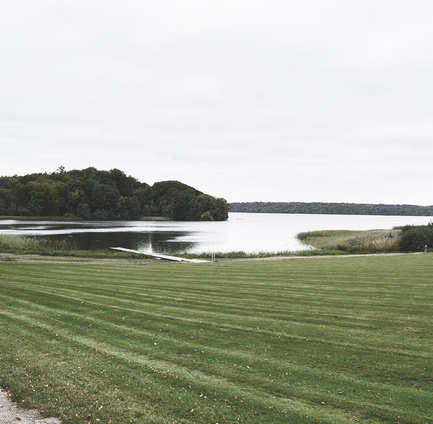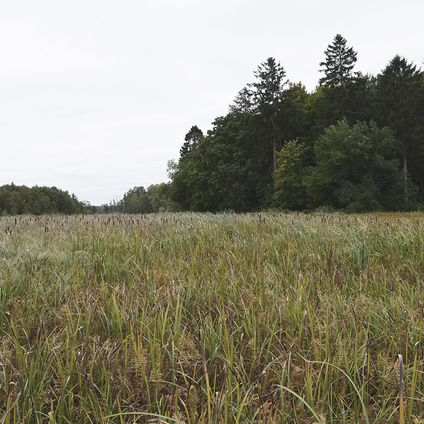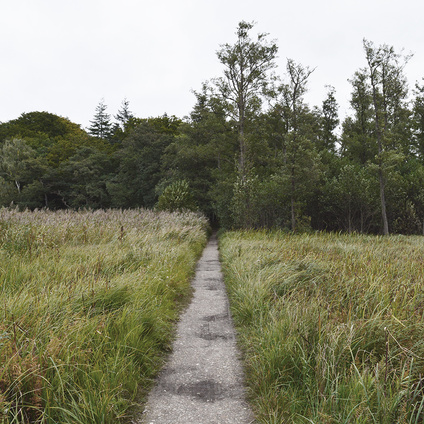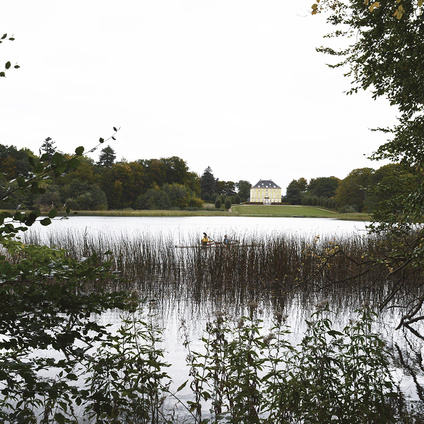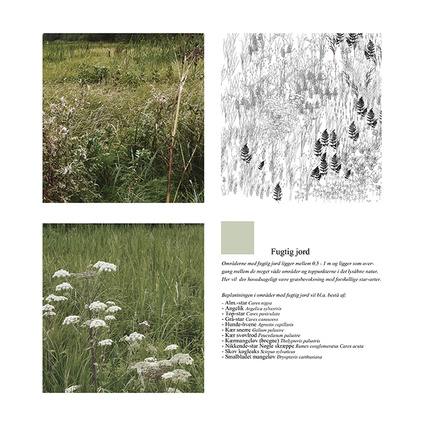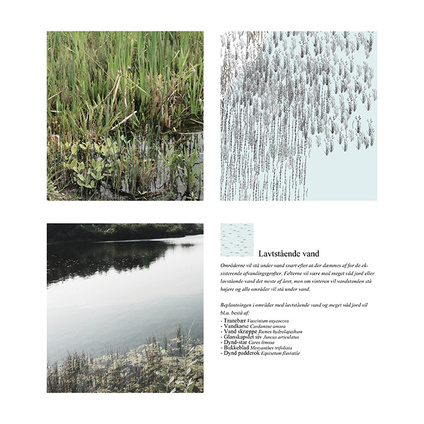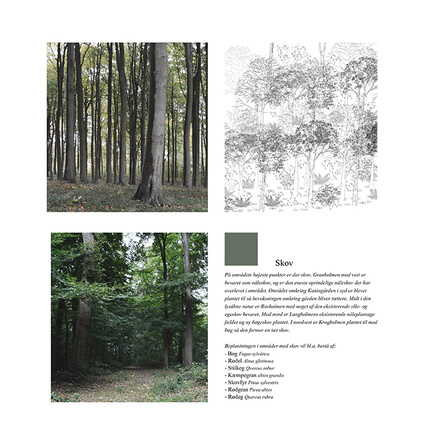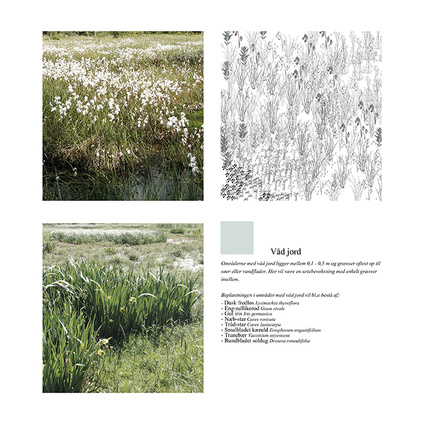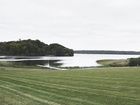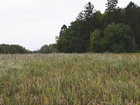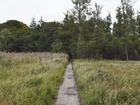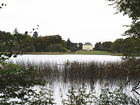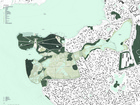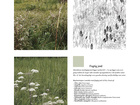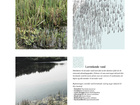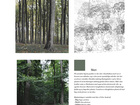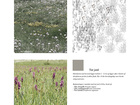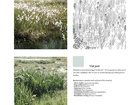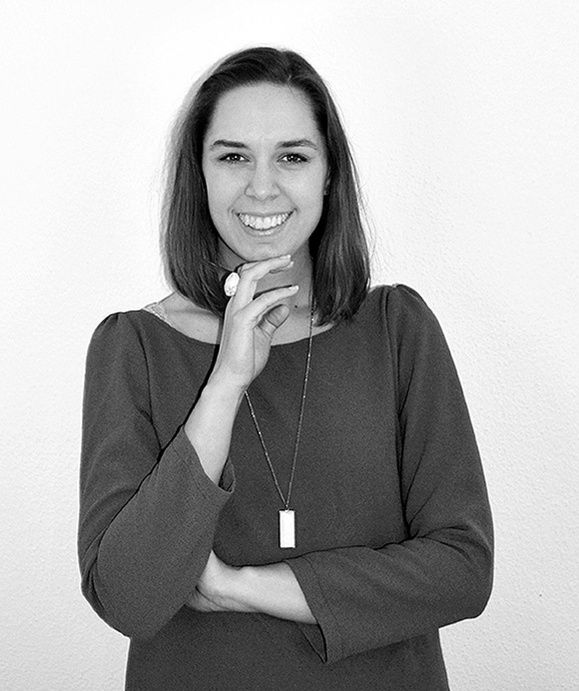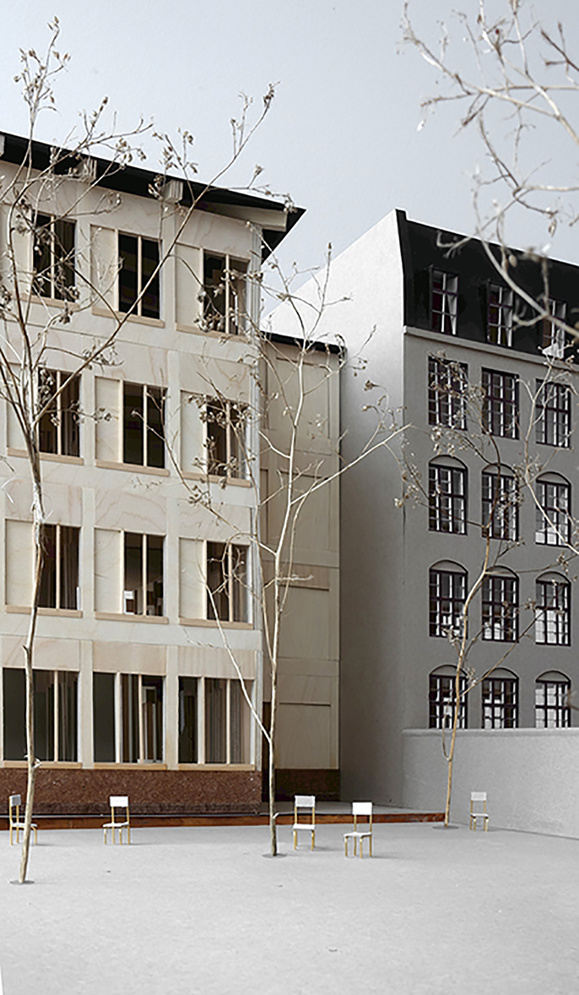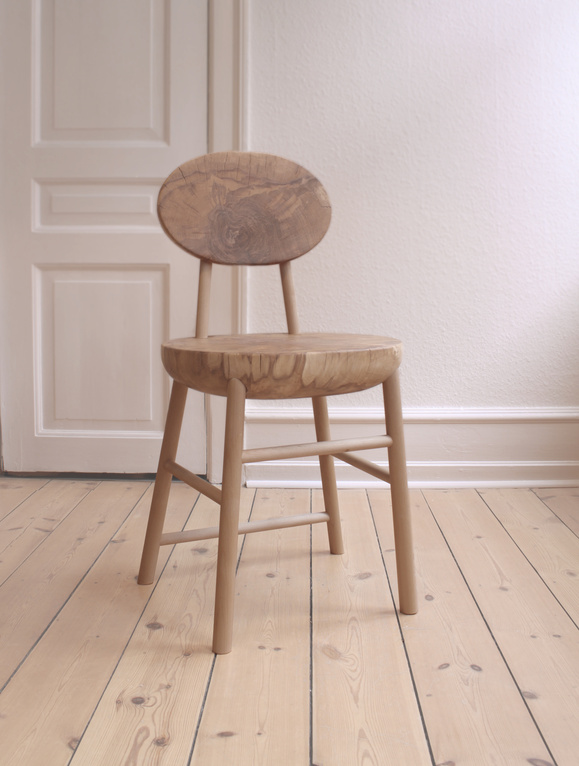Whereas nature used to be an ideal for mankind, today it is a valuable resource – but also vulnerable and something to look after. Meet the architect, Nicola Gliese. In her final project she reinterpreted the Romantic garden, Dronninggård with the aim of preserving the cultural landscape, while investing the garden with new recreational qualities. She did it so well, that she was awarded a VOLA scholarship for her work.
What is your final project about?
My final project is titled ‘Dronninggård - A Reinterpretation of a Landscape Garden on the banks of Lake Furesø’. It is about a historic heritage garden and addresses a current desire for brighter, lighter landscape in Denmark.
My proposal re-establishes and reinterprets the Romantic garden of Dronninggård with the original landscape garden structures and basic features from the par force landscape and new pathways and landscape elements that connect the historic, formal cultural landscape with the bright, open countryside area.
What was your motivation for this final project in particular?
A study trip to the garden of Sanderumgaard awakened my interest in the beautiful landscaped gardens of the Romantic age. I was introduced to Dronninggård and the garden’s rich history, and this made me want to explore the topic even more.
For me the important issue was how to preserve, yet also reinterpret landscape gardening today. In the Romantic age the perception of nature was as an ideal for mankind, and it was elevated to something sublime, whereas today we regard nature as valuable, but also vulnerable. Many efforts are made to protect and conserve nature: landscapes are protected and nature and national parks are created. The Danes have gained an awareness of nature as a focal point that provides recreational opportunities.
My project enabled me to combine the new conception of nature with the romantic garden by involving the surrounding areas and restoring a large open area with animals grazing, grassy hillocks and adventure trails.
Did you work with anyone else on the project and, if so, what impact did that have on the project?
I worked closely with Rudersdal municipality, where Dronninggård is located. They were immensely helpful in terms of gathering materials and learning about the site’s topography and biology. They put me in contact with the right people and showed great interest in my project from start to finish. After graduating, I went up there and presented my final project to their team of biologists, landscape architects and urban planners.
I also had great contact with the landscape architect, Kirsten Lund-Andersen who was responsible for a renovation of the Romantic garden in 1996.
How do you imagine your degree project will make a difference?
I hope the project will be able to make a difference with its perspective on historic landscape gardening and the cultural heritage we have in Denmark, which I think is so worth preserving.
The project is a proposal for how to do this by a process of restoration and reinterpretation. At the same time, the large area of open countryside is an indication of what we are demanding more of in Denmark. Open countryside is usually found in low-lying areas such as former meadows or bogs. By restoring countryside these types of areas can accommodate major natural values, and if, like Dronninggård, they are near towns, they will also help alleviate floods caused by torrential rain.
Can you see any job opportunities in your project?
I had a meeting with Rudersdal Municipality and they showed a great interest in my work. They will possibly take up some of my ideas and refine them. It would be exciting to work for the municipality and do more work in this field.
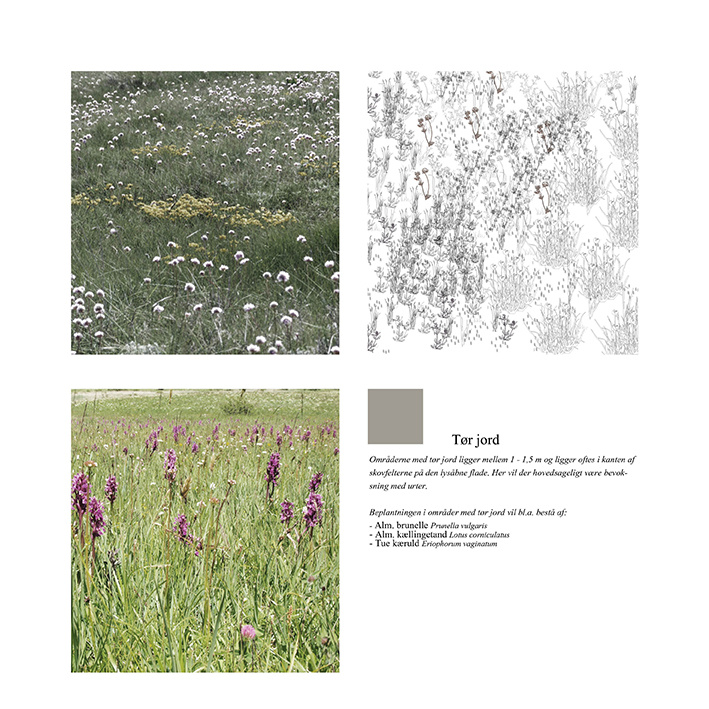
What is the most enjoyable aspect and the most difficult aspect of working in the field of landscape architecture?
The most difficult aspect of working as a landscape architect is adjusting to the large scale and gaining an understanding of the vast space you are working in.
I have a Bachelor’s degree in Architecture and Industrial Design and have always worked on a small scale, so when I chose Landscape Architecture for my post-graduate subject it was a much bigger challenge than I had anticipated. It has been an eye-opener and a brand new way of looking at space and architecture.
Luckily I have had some extremely clever and committed supervisors, who did everything to provide me with the best knowledge of the new idiom. After many educational trips in Denmark and excellent lectures on the formation of landscape, landscape architecture is now firmly rooted in my architectural education.
The most enjoyable aspect of landscape architecture is examining landscape, biology and space in depth, allowing oneself to really get stuck in to more specific aspects: for example, what plants grow where, what happens if water rises and what elements are most suitable. It is lovely to work on such a large scale, but still retaining a sense of the smaller spaces and getting acquainted with each and every element. Meanwhile, getting out and actually experiencing the space you are working on is such a wonderful learning experience. It has paved the way for interests related to architecture, which I never knew I had.
What do you think is your greatest strength as a KADK graduate?
My greatest strength is the versatility I have acquired from my studies. As I said before, I have a Bachelor’s degree in Architecture and Industrial Design, where I worked on a small scale from 1:50 to 1:1, and I have also worked with signing and way-finding and designed and constructed my own chair.
My Master’s degree has provided me with an insight into what ‘large scale’ means and a good understanding in terms of reading and devising maps and registrations of large spaces. I was also lucky enough to get a 6-month internship where I learned a lot about the more commercial side of the profession.
Where do you see yourself in five years’ time?
In 5 years’ time I see myself as part of a small team in a design studio or a municipality that works in various fields – not only landscape architecture, but also regular architecture/planning. I do not have a dream about starting my own company, but would love to be part of a newish studio with great colleagues and keep up with their evolution in the industry.


